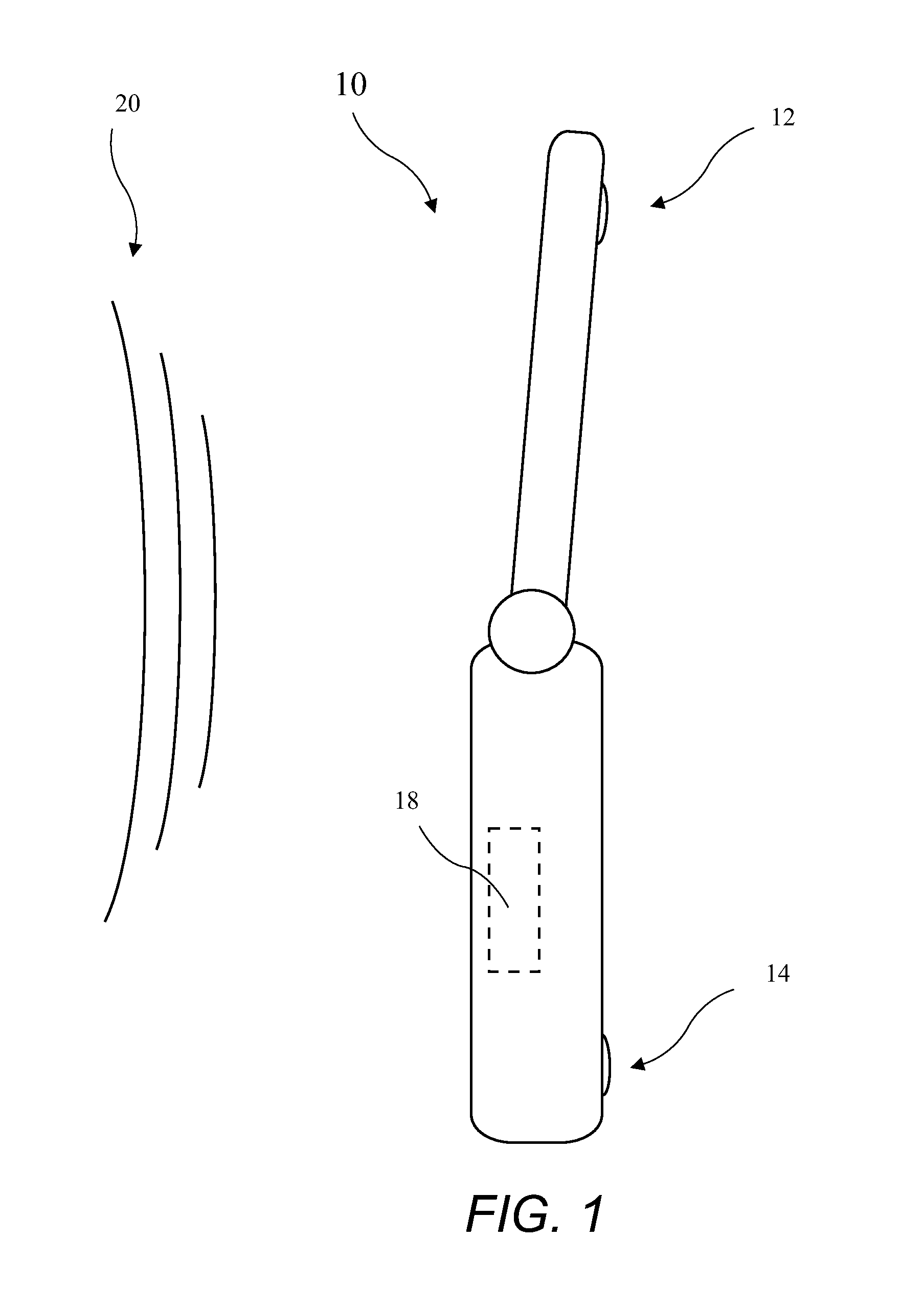System and Method for Performing Automatic Gain Control in Mobile Phone Environments
a mobile phone environment and automatic gain control technology, applied in the field of audio communication processing, can solve the problems of affecting the sound quality of the telephone, and the inability of the near-end listener to hear and understand the far-end acoustic signal produced by the telephone,
- Summary
- Abstract
- Description
- Claims
- Application Information
AI Technical Summary
Benefits of technology
Problems solved by technology
Method used
Image
Examples
Embodiment Construction
[0013]The following description is of the best mode presently contemplated for carrying out the invention. This description is not to be taken in a limiting sense, but is made merely for the purpose of describing one or more preferred embodiments of the invention. The scope of the invention should be determined with reference to the claims.
[0014]A telephone 10 including Dynamic Noise Compensation (DNC) processing according to the present invention is shown in FIG. 1. The telephone 10 may be a cell phone, a wireless phone (i.e., a phone receiving signals from a local base station which is hardwired, or a handset of a hardwired phone. The telephone 10 includes a speaker 12 for broadcasting an incoming far end speech signal, a microphone 14 for receiving the near end user's speech and ambient noise, and a signal processor 18 for performing DNC processing of the far end speech signal and the near end user's speech and ambient noise signal, to produce a compensated far end speech signal ...
PUM
 Login to View More
Login to View More Abstract
Description
Claims
Application Information
 Login to View More
Login to View More - R&D
- Intellectual Property
- Life Sciences
- Materials
- Tech Scout
- Unparalleled Data Quality
- Higher Quality Content
- 60% Fewer Hallucinations
Browse by: Latest US Patents, China's latest patents, Technical Efficacy Thesaurus, Application Domain, Technology Topic, Popular Technical Reports.
© 2025 PatSnap. All rights reserved.Legal|Privacy policy|Modern Slavery Act Transparency Statement|Sitemap|About US| Contact US: help@patsnap.com



